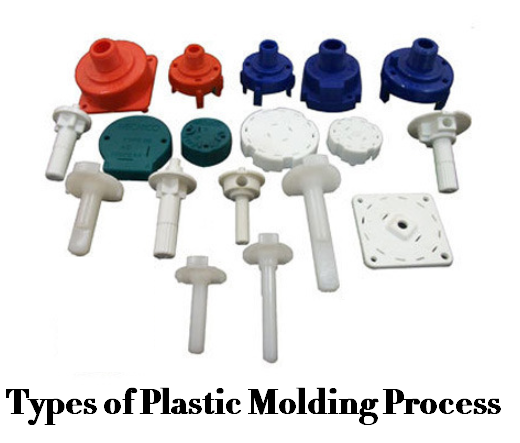A proper manufacturing method offers a lot of benefits for your business. For plastic materials, there is a wide selection of molding techniques to choose from, which is the best one for your project? In this article, let’s analyze the different types of plastic molding process with their working principles, advantages and applications.

Different Types of Plastic Molding Process & Techniques - How to Mold Plastic Parts
Basic types of plastic molding process including extrusion molding, blow molding, injection molding, thermoforming, compression molding, and rotational molding.
1. Extrusion molding
Extrusion molding is a manufacturing process that is similar to injection molding but usually, a long continuous shape is produced. In the extrusion process, we have the hopper on the machine, all the plastic pellets get pulled into the barrel which the reciprocating strew pushes forward, with extrusion molding, the molten plastic that gets heated up through the reciprocating screw and the heater bands actually just gets pushed through the die and gets extruded. Simply put, the plastic or resin is melted and continually extruded through a mold by a screw to obtain the final molded part. Extrusion molding provides plenty of advantages, including consistent cross-section for complex parts fabrication, lower raw material and disposal costs, considerable flexibility and more. Products like pipes, sheets and films can be made with extrusion molding.
2. Blow molding
Blow molding is a manufacturing process mainly used to form and join together hollow plastic parts. In blow molding, the molten plastic gets pushed down into the blow mold, which is going be in two halves and that’s going to come together, the plastic that gets put into the mold is called the parison and then the blow pen just blows pressurized air into the parison, in order to force all the plastic to the outside of the mold, and that’s how blow molding works. The parison is a tubular plastic object with a hole at one end through which compressed air can pass. This type of molding technique is commonly used to produce hollow parts like water bottles.
3. Injection molding
Plastic injection molding is a common form of plastic production, in this process, the molten plastic is injected at pressure into an injection mold cavity, which fills and solidifies to manufacture the final plastic part. Injection molding services are typically applied when there is a need for mass production. Injection molding is one of the most common types of plastic molding.
4. Rotational molding
Rotational molding is the process of filling a hollow mold with powdered plastic resin. During the process, the plastic such as resin, polymers or powder is put in the mold, which going to rotate around and heat up, so as it rotates, the plastic in the center is going to evenly distribute around the wall of the mold, therefore the resin hardens into the desired shape after the mold cools. The rotational molding process can be used to fabricate seamless hollow plastic for various applications, such as liquid storage tanks. Other products can also be made with this technique.
5. Thermoforming
Thermoforming is a production technology of heating the thermoplastic sheet to its softening point to make it stretch across a single-sided mold and form the desired shape when it cools. In the thermoforming process, we’ll have a very thin sheet of plastic that goes around the mold and with the help of atmospheric pressure, the thin sheet is gonna be heated and compressed around where the mold sits and then when that mold is taken away, we can get the final product. Thermoforming is usually used for very thin products such as disposable cups.
6. Compression molding
Compression molding is a plastic forming technique in which the plastic material is placed into a heated mold and softened by heat, then is forced to conform to the shape of the mold when the die closes. In compression molding, the plastic polymer or sometimes maybe rubber is put into the mold and it would actually compress over a period of time, and after that cools within the mold, the mold separates, then you have your plastic product. Compression molding is ideal for making heavier products like floor mats.
